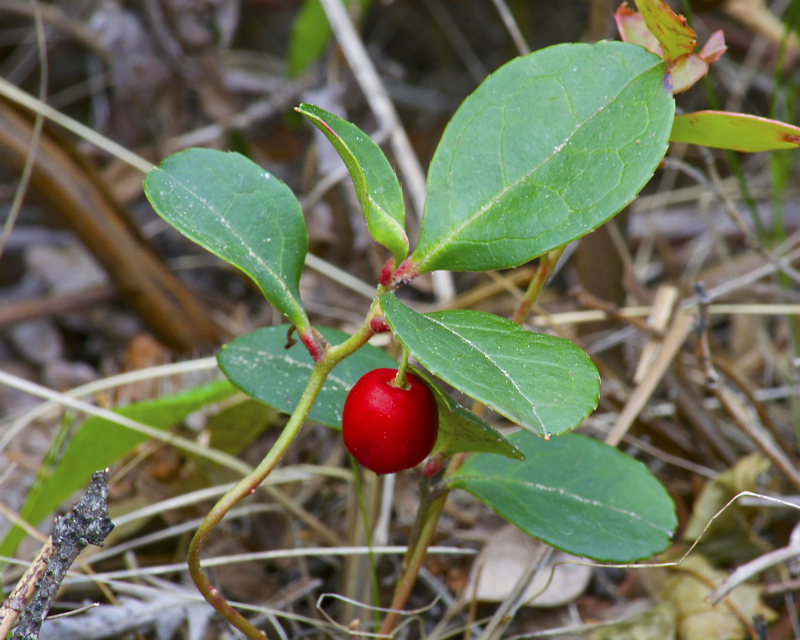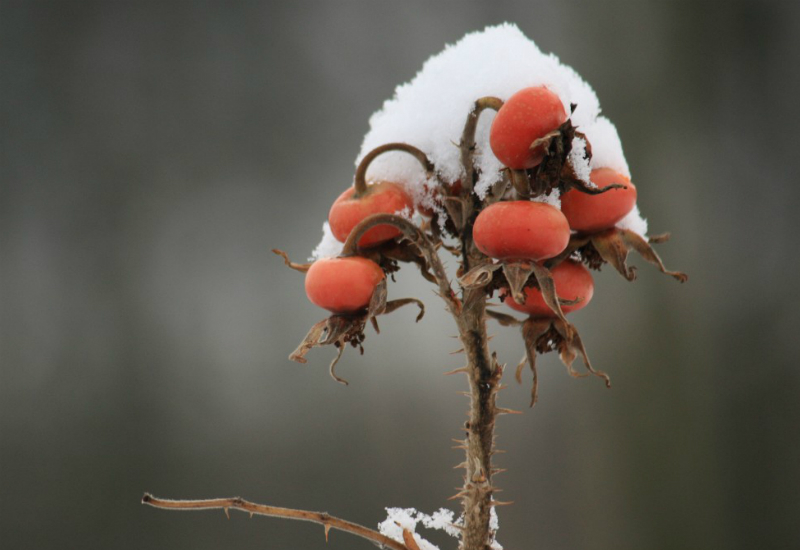
Call me crazy, but one of my favorite times of the year to forage is winter. Yes, you can find things growing in the winter, and I love the clarity that the fallen leaves and winter chill brings to the forest. Winter is a particularly good time to search out medicinal trees and evergreens, but there are other plants you can search for, too. The biggest benefit? There’s no messing around with ticks or spiderwebs or sweat—it’s just you and simple exploration of the great outdoors.
As with all foraging endeavors, do not consume any plants if you are unsure of their identity. Go with an experienced forager on your first excursions, and always have a trusted plant I.D. guide with you. When you forage, also be a good steward of the land—make sure you have permission to forage on that land, tread lightly, never take more than you can use and don’t deplete the source.
With these things in mind before you forage, bundle up and head out for the hunt. Here is a handful of my favorite winter herbs you can look for when foraging.
1. Wintergreen (Gaultheria procumbens)

Wintergreen, also known as teaberry, is one of my favorite woodland party tricks. When hiking with friends, I’ll pick a leaf off of this low-growing vine and ask them to chew on it. Skeptical at first, they are always pleasantly surprised by it’s refreshing, minty flavor.
- How to Spot It: Wintergreen is a low-growing, vining plant with waxy leaves and red berries. Don’t confuse wintergreen with partridgeberry, another vining plant with red berries that grows in the same areas. When in doubt, break off a leaf—wintergreen’s scent will most definitely give it away.
- Where to Find It: woodland areas throughout most of the eastern U.S. and Canada
- Parts to Pick: leaves, fruit
- How to Use It: Steep in a tea to soothe headaches as well as digestive troubles, such as gas or colic, and muscle pains. Use as a gargle for a sore throat.
2. Watercress (Nasturtium officinale)

This spicy relative to our garden-grown brassicas stays green well beyond other plants in the winter landscape.
- How to Spot It: Look for watercress in creeks or other clean-flowing waterbeds. It has oval-shaped leaves about 1 inch wide.
- Where to Find It: aquatic or semi-aquatic areas throughout most of the U.S. and Canada
- Parts to Pick: aerial parts
- How to Use It: It’s high in vitamins and minerals, particularly vitamin C. Pick this plant for winter soups, salads or seasonings.
3. Rose Hips (Rosa spp.)

Rose hips, the fruit of a rose plant, add a bit of beauty and color to the winter landscape.
- How to Spot It: Roses are in the apple family, so it makes sense that rose hips look like tiny, red apples on the limbs of a thorny bush. The size will vary from about the size of a pea to the size of a marble depending on the rose type.
- Where to Find It: Various rose types are found in woodlands and pastures throughout the U.S. and Canada.
- Parts to Pick: fruit
- How to Use It: Although the nutritional content and flavor of rose hips varies by type, the fruit is generally high in vitamin C. Use it to make tea, jelly, syrup or any other culinary creation—just make sure to remove the seeds first.
4. Birch (Betula spp.)

I remember as a child pulling the bark off the birch trees in my grandmother’s yard. If only I had known then that it could have been brewed into a tasty drink.
- How to Spot It: The American White birch (Betula papyrifera) is easily recognized by its smooth, papery, peel-able bark. Sweet birch (Betula lenta) has a similar texture, but is black and not papery. There are many other birches with similar characteristics, as well.
- Where to Find It: throughout the U.S. and Canada
- Parts to Pick: twigs, bark
- How to Use It: The bark and twigs from all birch trees can be brewed into a wintergreen-flavored tea. It is a blood purifier, it can calm a fever, and it can help a wound heal more quickly when applied externally.
- Other Considerations: If possible, forage from dead or fallen trees, as a live tree can be harmed if the inner bark is damaged. If you live in the north and are up for a real foraging adventure, look for the chaga, a medicinal fungus that grows on birch trees.




